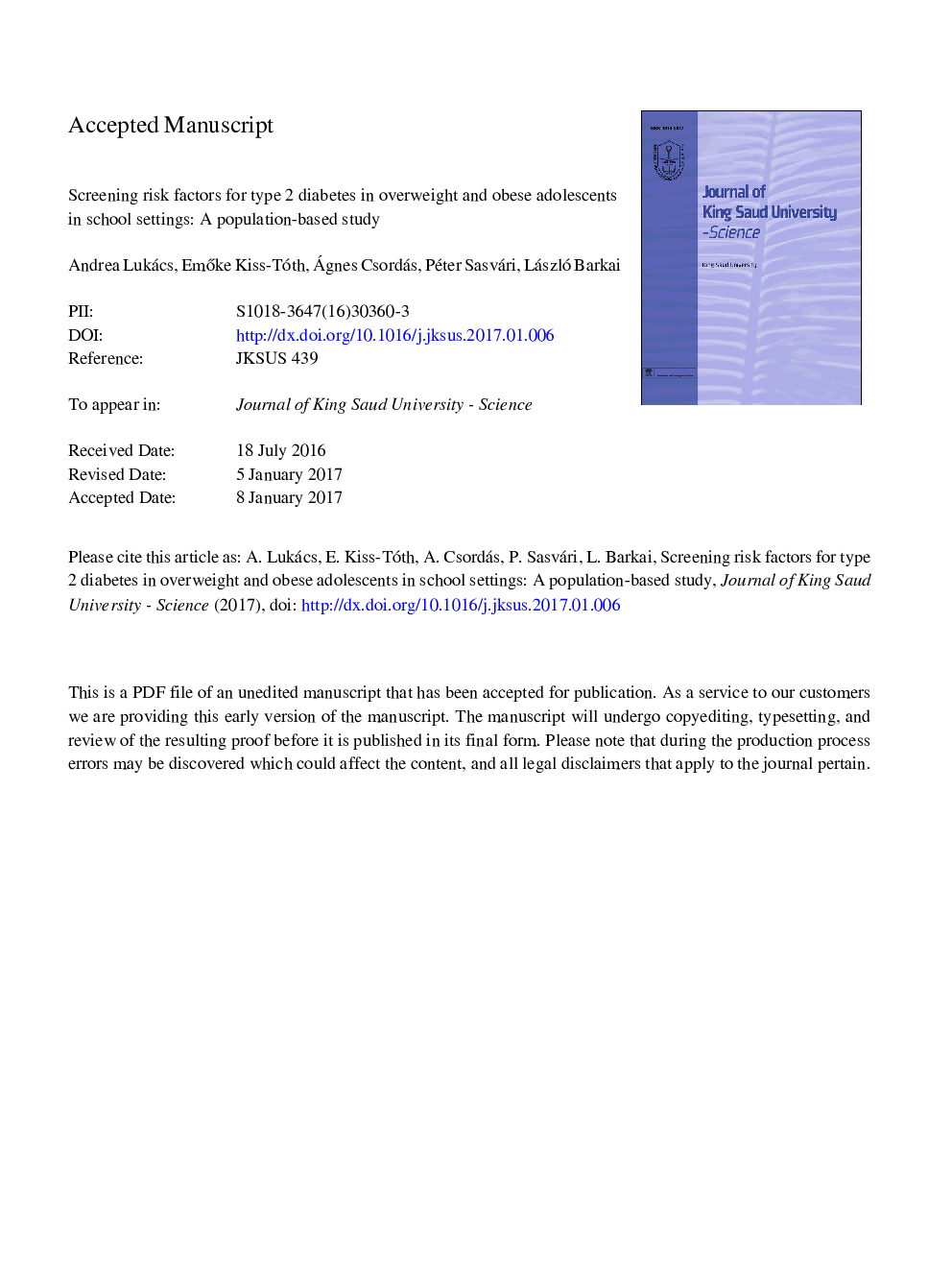| Article ID | Journal | Published Year | Pages | File Type |
|---|---|---|---|---|
| 7216594 | Journal of King Saud University - Science | 2018 | 18 Pages |
Abstract
This population-based quantitative study explored the proportion of at-risk adolescents for development of type 2 diabetes (T2D) at school settings of Hungary. There were 3962 adolescents with BMIs over 85th percentile. School nurses completed a screening form to collect demographic data and risk factors for development of T2D (family history (accounted 83.3%), hypertension (75.0%), Acanthosis nigricans (37.1%), dyslipidemia (20.7%) and PCOS in females (9.6%). 512 students (262 males, 250 females) had at least two signs of conditions associated with insulin resistance and considered at-risk individuals. There was no gender difference regarding the risk factors for T2D, however, adolescents born preterm (X2(1) = 4.292, p = 0.047) and living in rural areas (X2(1) = 5.520, p = 0.022) were more likely to be at-risk. Gender difference was observed in hypertension, and boys were more afflicted with a higher T2D risk. Thirteen percent of adolescents are at-risk for development of T2D in later years. These population-based screening data highlight the need for public health approach. School settings may serve as suitable location where the screening and preventive protocol can be developed.
Related Topics
Physical Sciences and Engineering
Chemistry
Chemistry (General)
Authors
Andrea Lukács, EmÅke Kiss-Tóth, Ágnes Csordás, Péter Sasvári, László Barkai,
